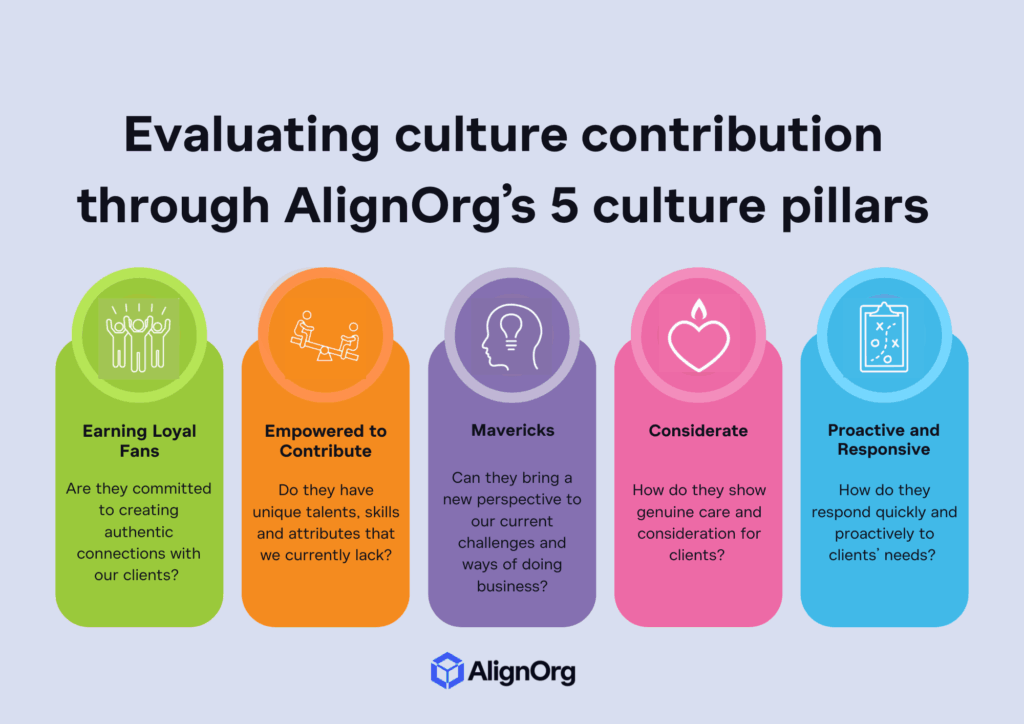“We’re looking for someone who’s a good culture fit.”
I hear this phrase constantly from leaders, HR professionals and hiring managers. On the surface, it sounds reasonable—even responsible. After all, cultural alignment matters for team cohesion, performance and retention. But here’s the uncomfortable truth: hiring for “culture fit” is slowly killing your organization’s ability to grow, adapt and innovate.
After years spent helping organizations design themselves for success, I’ve watched countless companies become victims of their own cultural homogeneity. They hire people who think like them, act like them and solve problems like them. Then, they wonder why they struggle to adapt to new markets, or innovate beyond incremental improvements. They often find themselves disrupted by more agile competitors.
The problem isn’t that culture doesn’t matter—it’s that we’ve been thinking about it all wrong.
The Culture Fit Trap
Traditional culture fit hiring operates on a dangerous assumption: your current culture is optimal and should be preserved exactly as it is. This leads to what I call “cultural photocopying,” where each new hire reinforces existing patterns. Gradually, this creates an echo chamber of similar perspectives, experiences and approaches.
The symptoms are predictable:
- Teams that think they’re aligned but are actually homogeneous
- “Collaborative” meetings where everyone quickly agrees because they all see issues the same way
- Innovation efforts that produce variations on familiar themes rather than breakthrough thinking
- Transformation initiatives that stall because no one challenges fundamental assumptions
At AlignOrg Solutions, we learned this lesson as we scaled from a single-person consultancy to a global organization design firm. Early on, we fell into the culture fit trap ourselves, hiring consultants who were skilled and pleasant but thought remarkably similarly. Our client work was solid but predictable. Our solutions were competent but not particularly innovative.
Then we made a crucial shift: we stopped hiring for culture fit and started hiring for culture contribution.
Culture Contribution vs. Culture Fit
Culture contribution means hiring people who can both embrace your core principles AND expand how those principles are expressed. Instead of asking “Will this person fit our culture?” we ask “How will this person help our culture evolve while staying true to our foundation?”
This shift has profound implications for how you evaluate candidates and design your culture itself. Rather than looking for people who mirror your existing team, you look for people who can add new dimensions to your cultural expression.
Here’s how this plays out in practice through AlignOrg’s five cultural pillars:
Earning Loyal Fans: Different Paths, Same Destination
Culture fit thinking: “Do they build relationships the way we do?”
Culture contribution thinking: “Do they have a track record of creating lasting value for others, regardless of their approach?”
We’ve hired consultants who earn loyalty through deep analytical rigor, others through emotional intelligence and empathy and still others through creative problem-solving. Each brings a different relationship-building style, but all share the fundamental commitment to creating genuine value that turns clients into advocates.
The result? Our client relationships are stronger because we can connect authentically with a broader range of leadership styles and organizational cultures.
Empowered to Contribute: Expanding the Definition of Contribution
Culture fit thinking: “Do they contribute in ways that feel familiar to us?”
Culture contribution thinking: “What unique perspective or capability can they bring that we’re currently missing?”
One of our best hires was someone whose background in technology startups initially seemed misaligned with our consulting culture. But their experience with rapid iteration and user-centric design revolutionized how we develop and refine our methodologies. They didn’t just fit our empowerment culture—they expanded what empowerment could look like.
Mavericks: Comfortable with Different Types of Contrarian Thinking
Culture fit thinking: “Are they contrarian in the same way we are?”
Culture contribution thinking: “What conventional wisdom do they challenge that we haven’t thought to question?”
We’ve learned that there are many ways to be a maverick. Some challenge through data and analysis, others through creative reframing, still others through systematic experimentation. The key isn’t that everyone challenges convention the same way—it’s that everyone brings a willingness to question assumptions and explore new possibilities.
Considerate: Expanding Our Capacity for Different Types of Care
Culture fit thinking: “Do they show consideration in ways we recognize?”
Culture contribution thinking: “How do they demonstrate genuine care for others’ success and wellbeing?”
Consideration manifests differently across cultures, personalities and professional backgrounds. We’ve hired team members whose consideration expresses itself through meticulous attention to detail. Some team members ask probing questions that help clients think more clearly, while others create psychological safety for difficult conversations. Each style of consideration enhances our ability to serve clients authentically.
Proactive & Responsive: Different Approaches to Anticipation and Adaptation
Culture fit thinking: “Do they anticipate and respond the way we do?”
Culture contribution thinking: “What do they notice and act on that we might miss?”
Some team members are proactive about relationship dynamics, others about technical risks, others about market trends. Some respond quickly through decisive action, others through careful analysis, others through stakeholder alignment. This diversity of proactive and responsive styles makes us collectively more aware and adaptable.

Building Anti-Fragile Culture
When you hire for culture contribution rather than culture fit, something remarkable happens: your culture becomes anti-fragile. Instead of being weakened by new perspectives and approaches, it grows stronger. Instead of needing to be protected from change, it thrives on it.
This doesn’t mean abandoning all cultural standards or hiring randomly. Your core principles—your cultural DNA—remain non-negotiable. But you expand how those principles can be lived out, expressed and applied.
At AlignOrg, our five pillars are our constants. But the ways those pillars manifest in our work continue to evolve as each new team member brings their unique interpretation and application of these principles.
The Innovation Dividend
The business impact of this shift has been dramatic. Our solutions are more creative because we have more diverse problem-solving approaches. Our client relationships are stronger because we can authentically connect with a broader range of personalities and cultures. Our adaptability is higher because we’re comfortable with multiple ways of approaching challenges.
Most importantly, we’ve become better at what we do for clients: helping them design organizations that can evolve and adapt while maintaining their core identity and values.
The Culture Contribution Hiring Framework
Here’s how to make this shift in your own organization:
Before the interview: Instead of asking “What kind of person fits here?” ask “What perspective or capability are we missing?”
During the interview: Focus less on whether candidates think like your existing team and more on whether they can add something valuable while embracing your core principles.
After the hire: Create onboarding that helps new team members understand how to express your cultural values in their unique way rather than conform to existing expressions.
Beyond Hiring: Culture as a Living System
Ultimately, this approach requires viewing culture not as a fixed asset to be preserved, but as a living system designed to evolve. Your cultural principles provide stability and identity while allowing for growth and adaptation.
This is especially critical in today’s business environment, where the ability to adapt quickly while maintaining core identity often determines competitive success. Organizations with anti-fragile cultures don’t just survive disruption—they thrive on it.
The question isn’t whether your culture will change—it will. The question is whether you’ll intentionally guide that evolution by bringing in people who can contribute to your cultural growth, or whether you’ll accidentally stagnate by hiring only people who fit your cultural past.
At AlignOrg, we’ve learned that the strongest cultures aren’t the most homogeneous ones—they’re the ones with the clearest principles and the most diverse expressions of those principles.
Stop hiring for culture fit. Start building culture that contributes to your future success.
How has your organization balanced cultural consistency with the need for fresh perspectives? I’d love to hear about your experiences with culture evolution—both the successes and the challenges.





